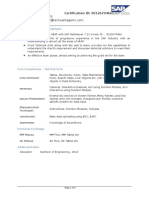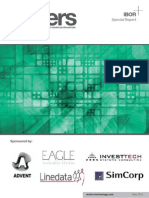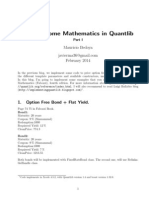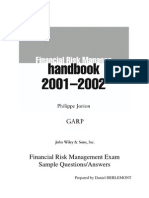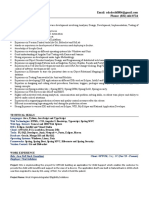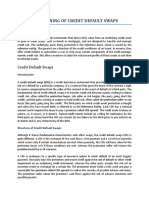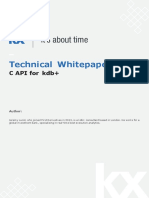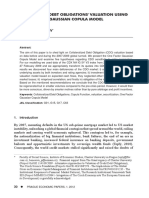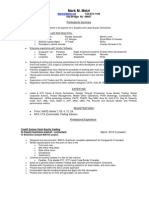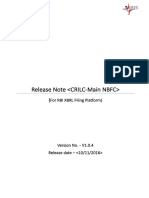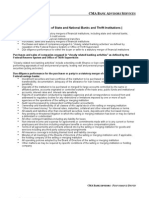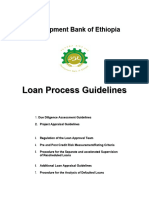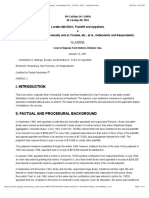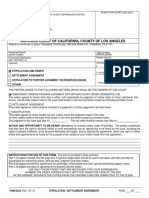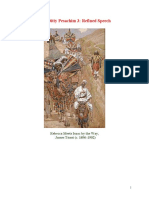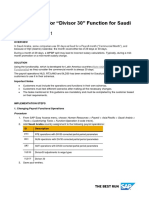Lending Regulations Regulation Truth in Lending Regulation Z Due Diligence Considerations Determine whether loan product features will
ll change in a manner that adversely affects consumers, such as revisions to payment processing or payment structure and proved applicable notices. Continue periodic statements for all openend products and consider regulatory statement formats requirements, particularly when using custom formats. Ensure proper notification for variablerate adjustments on adjustable-rate mortgages. Determine whether purchased-dwellingsecured loans require notices to affected consumers in accordance with Helping Families Save Their homes Act of 2009. Determine if the acquired institution had loans subject to the Higher Education Act to ensure proper administration. Determine if the acquired institution offered credit cards to ensure effective processes are in place to maintain credit card functions and characteristics, as prescribed by the Credit CARD Act of 2009. Ensure the integrity of a consumers right to rescind applicable transactions. The FDICs evaluation of a banks CRA performance is adversely affected by evidence of illegal credit practices, including violations regarding a consumers right of rescission. Provide the appropriate Servicing Transfer notice. Maintain escrow account administration, including annual analysis and Notification(s). Consider any existing secondary market and other referral arrangements. Identify covered loans and ensure adequate insurance coverage. Notify the Federal Emergency Management Agency (FEMA) of change in servicer. Determine if the previous lender required escrow and consider the impact for
Real Estate Settlement Procedures (RESPA) Regulation X
Flood Insurance
� Home Mortgage Disclosure Act (HMDA) Regulation C Homeowners Protection Act (Private Mortgage Insurance)
Protecting Tenants at Foreclosure Act
Fair Credit Reporting Act (FCRA)/Fair and Accurate Credit Transactions Act
Secure and Fair Enforcement for Mortgage Licensing Act (SAFE Act) Fair Lending Regulations
escrowed loans requiring flood insurance Notify the third party responsible for lifeof-loan monitoring of the new lien holder. Determine the impact on HMDA reporting for the surviving institution. Maintain private mortgage insurance administration tasks, including annual notices and other subsequent notification requirements. Determine if any foreclosure proceedings are in process, or if foreclosure is necessary after the transaction. Provide required notices to qualified tenants. Provide updated Negative Information notice disclosures, when necessary. Ensure written policies and procedures adhere to all applicable provisions of FCRA and its implementing rules, such as the Affiliate Marketing Rule, Medical Information Rule, and Furnisher Rule. Identify Mortgage Loan Originators. Update employer/employee information in registry within 60 days of change. Conduct a comprehensive Fair Lending review to ensure the acquired loans reflect: consistency in pricing and underwriting; no impermissible redlining or steering practices; fair marketing practices; and a strong CMS as it relates to Fair Lending Analyze the assessment area and determine if any newly acquired loan(s) could adversely affect the Fair Lending posture of the surviving institution. Any material inconsistency(ies) between the provisions of an acquired loan and the surviving institutions policies should be identified and monitored to ensure the loan is administered in a manner that is consistent with all applicable Fair Lending laws and regulations. Note the applicability of regulations related to Fair Lending (such as the Equal Credit Opportunity Act, Fair Housing Act, HMDA, and FCRA).
�Deposit Regulations Regulation Truth in Savings-Regulation DD Due Diligence Consideration Determine whether terms / features will change and provide applicable Change in Terms notices. Continue to provide periodic statements with accurate customized information (if applicable). Identify changes in terms and provide notification within regulatory timeframes. Consider overdraft payment opt-inrequirements for newly acquired customers. Identity changes in funds availability policies and ensure compliance with Regulation CC. Ensure transaction processing cut-off timeframes are properly disclosed, if different at various branch locations. Due Diligence Consideration Consider the effect of the merger/acquisition on the demarcated CRA assessment area. Should the assessment area be expanded as a result of the transaction? Determine whether the merger will change how the surviving bank is evaluated for CRA. For example: Will an increase in asset size define the bank as an intermediate small bank after two consecutive years with assets above the published threshold? Will the merger result in the acquisition of branches in a separate Metropolitan Statistical Area (MSA) or a non-contiguous non-MSA? Ensure the CRA Public File at each office is updated to reflect new loan-to-deposit ratios (for institutions subject to the small bank lending test), updated assessment area(s), products and services, HMDA disclosure statement (if applicable), and branch listing. Ensure branch closing policies adhere to stature and applicable policy. Consider Interstate Banking and Branching Efficiency Act applicability. Review
Electronic Fund Transfers Regulation E
Expedited Funds Availability Act (EFAA) Regulation CC
Other Regulation Community Reinvestment Act (CRA)
Deposit Insurance
Privacy
Unfair or Deceptive Acts or Practices (UDAP)
Don-Deposit Investment and Insurance Products
impacts on how the surviving institution will be evaluated. Ensure mergers between insured depository institutions (IDI) and an IDI and a noninsured institution satisfy the requirements of the Bank Merger Act and related Interstate Banking and Branching Efficiency Act. Consider the impact on deposit insurance coverage for customers with deposits at both institutions. Deposits from the assumed bank are separately insured from deposits at the assuming bank for at least six months after merger. The grace period gives a depositor the opportunity to restructure his or her accounts, if necessary. Determine impact on privacy policy provisions, including compliance with the Gram-Leach Bliley Act (GLBA) Privacy of Consumer Financial Information Rule and affiliate-sharing rules issued under FCRA. Provide applicable privacy notices to acquired customers within reasonable time. Consider the adequacy of disclosures to consumers regarding changes to account terms. Consider the adequacy of policies in both the lending and deposit areas. Consider potential impacts on customer accounts converted to accounts without the same benefits or rewards to identify the content and timing of the notice needed to clearly inform affected customers of all material changes. Determine whether the surviving institution intends and has the capacity to maintain grandfathered products and services. Determine if either bank sells retail insurance or investment products and ensure staff member licensure and registration is current in accordance with federal and state requirements. Determine if products are offered through a broker via a third-party arrangement.
�Fair Debt Collection Practices
Servicemembers Civil Relief Act
Determine if the acquired bank collects debt for third parties and the scope of that function. Determine if the acquired institution currently services loans for covered borrowers to ensure the bank maintains and tracks relief under the regulation.
Source: Mergers and Acquisitions: A Compliance Perspective, FDIC Supervisory Insights, Summer 2013.

